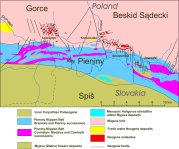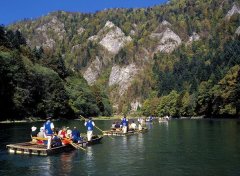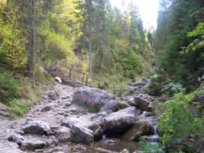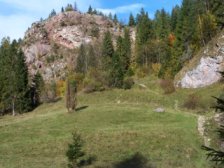Post-meeting field trip 1
Lower Jurassic black shales - the oldest flysch deposits of the Carpathians - and their relation to geology of the Pieniny Klippen Belt
The Pieniny Klippen Belt
The Pieniny Klippen Belt (PKB) is situated in the Northern Carpathians at the boundary of two ranges: an older range known as the Inner Carpathians and the younger one, known as the Outer or the Flysch Carpathians. Present day confines of the Pieniny Klippen Belt are strictly tectonic. This strongly tectonized structure is about 600 km long and 1-20 km wide, stretching west to east from Vienna to Romania.

The Pieniny Klippen Belt is composed of several successions of mainly deep and shallow-water limestones, covering a time span from the Early Jurassic to Late Cretaceous. The shallowest succession, Czorsztyn succession, is initiated by black shales of Lower Jurassic age.

This field trip will show a part of the geological history of the Pieniny Klippen Belt and the Outer Carpathians recorded in clay minerals of Lower Jurassic black flysch. Two stops are planned:
Stop 1. Dunajec River Boat trip (rafting)
The Dunajec River Gorge rafting is one of the most popular attractions in the Pieniny Mts, especially for tourists who are interested in the geological history of this mountain range and their geomorphological features. Rafting has been practised in the Dunajec River from the XIX century and is very popular nowadays. The boats are run by licensed pilots living in the Pieniny Mountains villages. Originally the boat starting point was in Czorsztyn, below the Castle Hill. After the Dunajec River dams at Czorsztyn and Niedzica were constructed, the new point of departure is at Sromowce-Katy. Each Dunajec River boat carries 10 tourists and one or two highland pilot-guides. They have a special design allowing easy maneuvering on the Dunajec white waters.

Stop 2. Jaworki village - Homole Gorge
South of the Jaworki village, the Homole tectonic block is cut through with a famous deep gorge. Near 100 m of a section of white crinoidal limestones of the Czorsztyn Succession is exposed. These deposits are overlain by red crinoidal limestones and ammonitico rosso-type nodular limestones which reach a maximum of 20 m in thickness. Both crinoidal units are Bajocian in age whereas the condensed nodular limestones (Ammonitico Rosso-type) can be dated as Middle and Late Jurassic. The succession reflects the deepening-upward sequence, showing a decrease of sedimentation rate in a pelagic sedimentation regime during late Mid-Late Jurassic time.

In the highest part of the Homole Gorge, there is a famous fold structure of the Pieniny Klippen Belt, known as Czajakowa Skala Klippe. Several beds of both red nodular limestones and intercalated radiolarites are strongly internally folded. The Czajakowa Skala Klippe shows a complete sequence of the Jurassic deposits of the Niedzica Succession. The oldest exposed deposits represent the black flysch. It consist mainly of black and grey marly shales, with subordinate, usually thin, strongly micaceous, turbidite sandstone intercalations. Spherosiderite concretions, limonite lenses and pyrite aggregates occur in the shales. Illite, kaolinite, illite/smectite (20-80% S), chlorite and carbonates (calcite, dolomite) are the main components of black shales.

